As Houses & Holes reported earlier, the Australian Bureau of Statistics (ABS) this morning released the labour force data for the month of January and it was very good.
In seasonally adjusted terms, total employment increased 46,300 (0.4%) to 11,463,000. Full-time employment increased 12,300 persons to 8,063,100 and part-time employment increased 34,000 persons to 3,400,800.
The below chart shows the changes in these components since April 2008. As you can see, this month’s employment gain of 46,300 persons more than offset the prior two month’s job losses (41,100 persons):
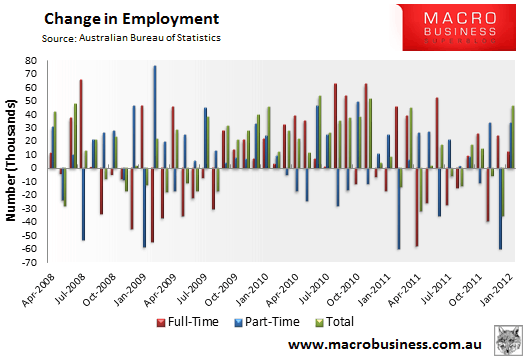
The total level of employment in Australia has now reached an all-time high, surpassing the previous peak reached in March 2011:
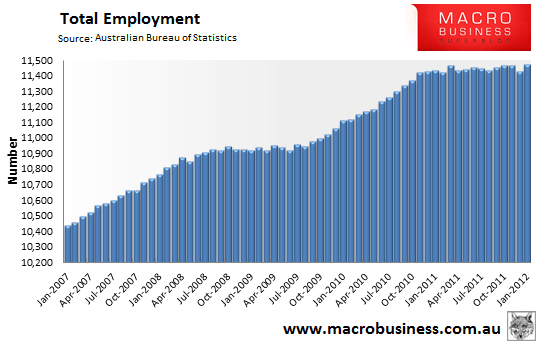
Importantly, January’s strong employment numbers have reversed the downtrend that developed in the second half of 2011, whereby 27,400 jobs were lost, 21,800 of which were full-time. The calender year to December 2011 was the first time in 19 years that the Australian economy has shed jobs, so the reversal in this month’s numbers moves the rolling annual jobs growth into positive territory:
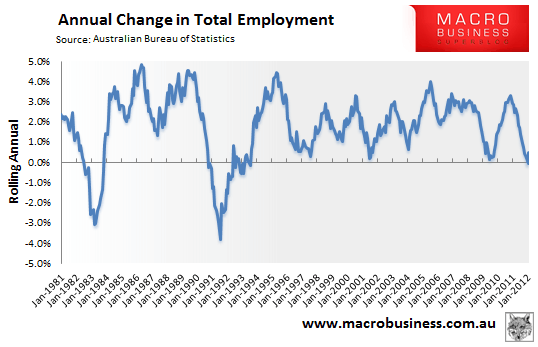
Despite the creation of 46,300 jobs – and increase of 0.4% – the headline unemployment rate only fell by 0.1% to 5.1%. This is because the labour force participation rate also rose by 0.1%, helping to offset some of the employment gain (see below chart).
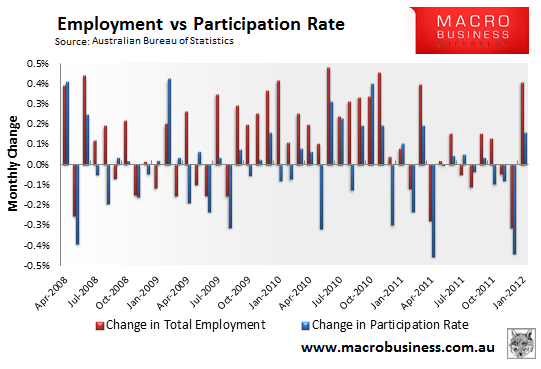
This is a welcome development. The increase in the labour force participation rate in January helps to offset a downtrend that has developed since October 2010, presumably due to discouraged job seekers leaving the workforce:
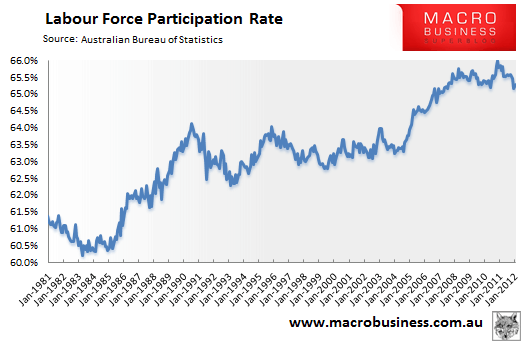
One blemish on the otherwise strong figures is that the aggregate number of hours worked actually fell by 23.1 million hours in January – the largest fall since February 2009 (see below charts). This might indicate that employers are ‘hoarding’ workers, but actually giving them less hours and/or that contractors are working less.
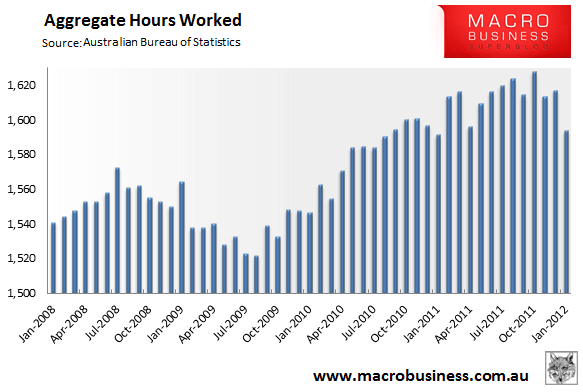
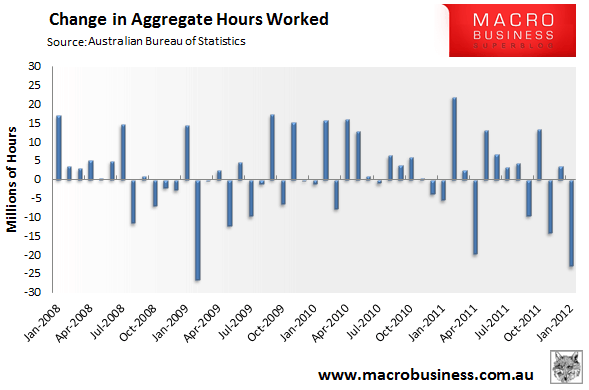
Turning to the state-by-state breakdown, the resource states of Western Australia and Queensland led the way, each generating 20,000 jobs. By contrast, Tasmania (-4,100) and Victoria (no change) were laggards:
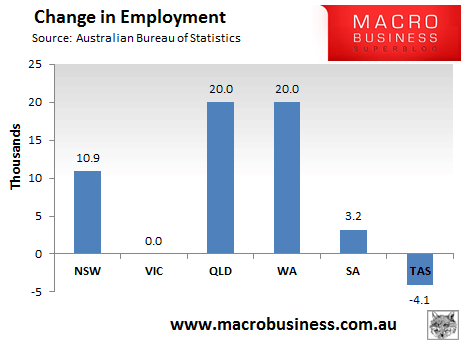
Reflecting its status as Australia’s resources capital, Western Australia has by far the lowest unemployment rate in the nation (4.2%), well below the other mainland capitals (ranging between 5.1% and 5.4%). Tasmania has the worst unemployment in the nation at 7.0%:
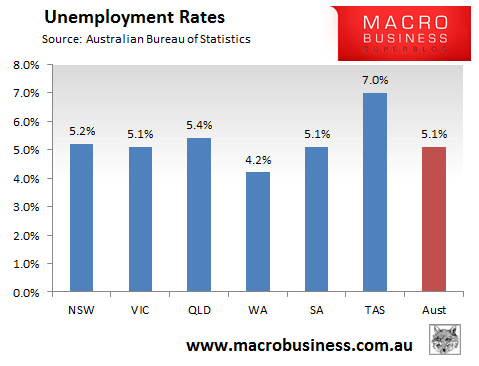
So overall it’s a strong result, with the caveat that aggregate hours worked fell very sharply. Moreover, with the relentless announcements of job losses across the financial sector, retailing and manufacturing, as well as the sharp divergence between the official ABS figures and the Roy Morgan numbers, unemployment still looks set to rise. The question is how quickly and how high.
Further, while there’s a long time between now and the next RBA decision on interest rates, and anything can happen between now and then, you would have to think that this strong jobs result would make the RBA less inclined to cut interest rates next month, irrespective of the banks’ recent out-of-cycle rises.

